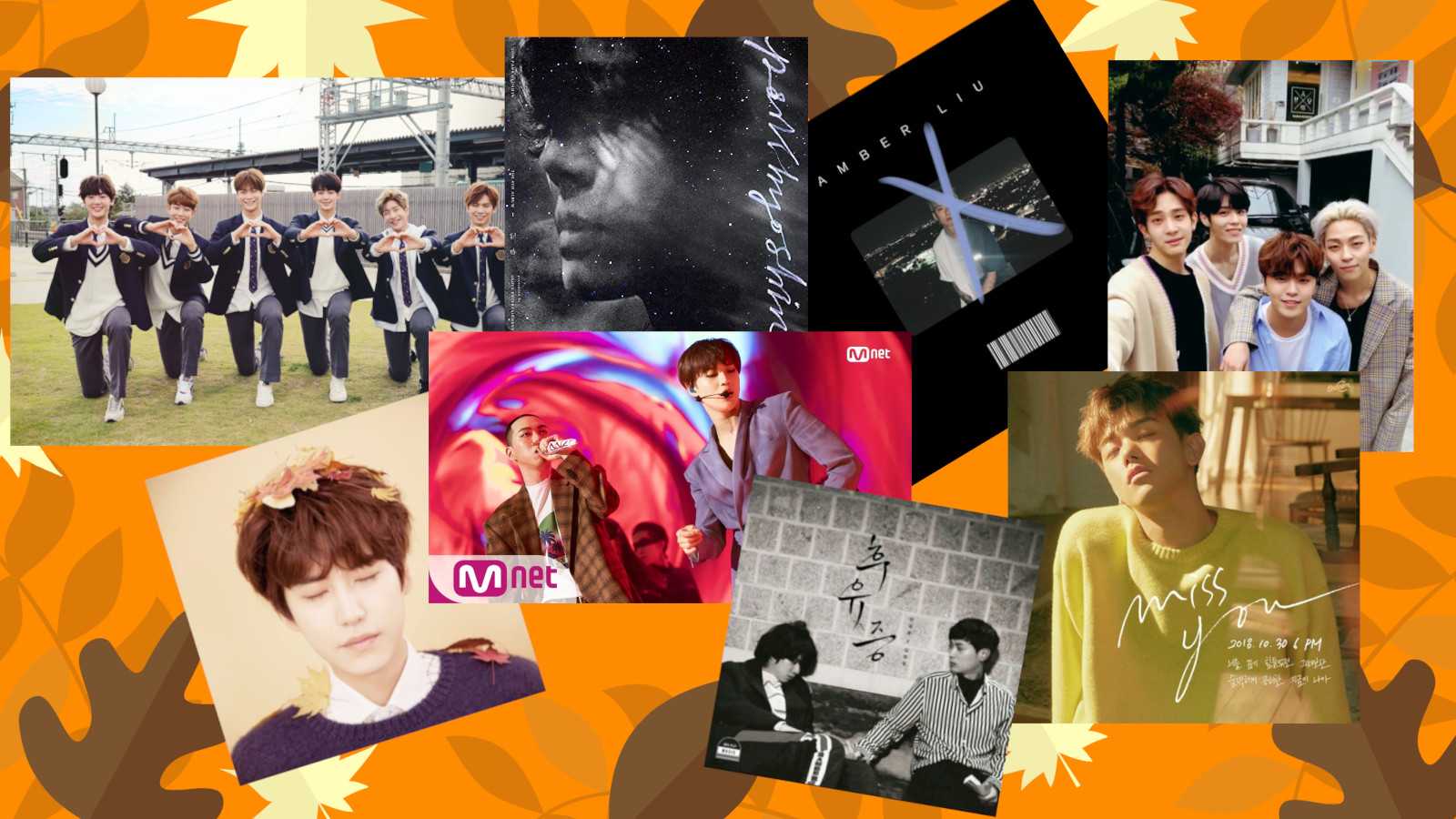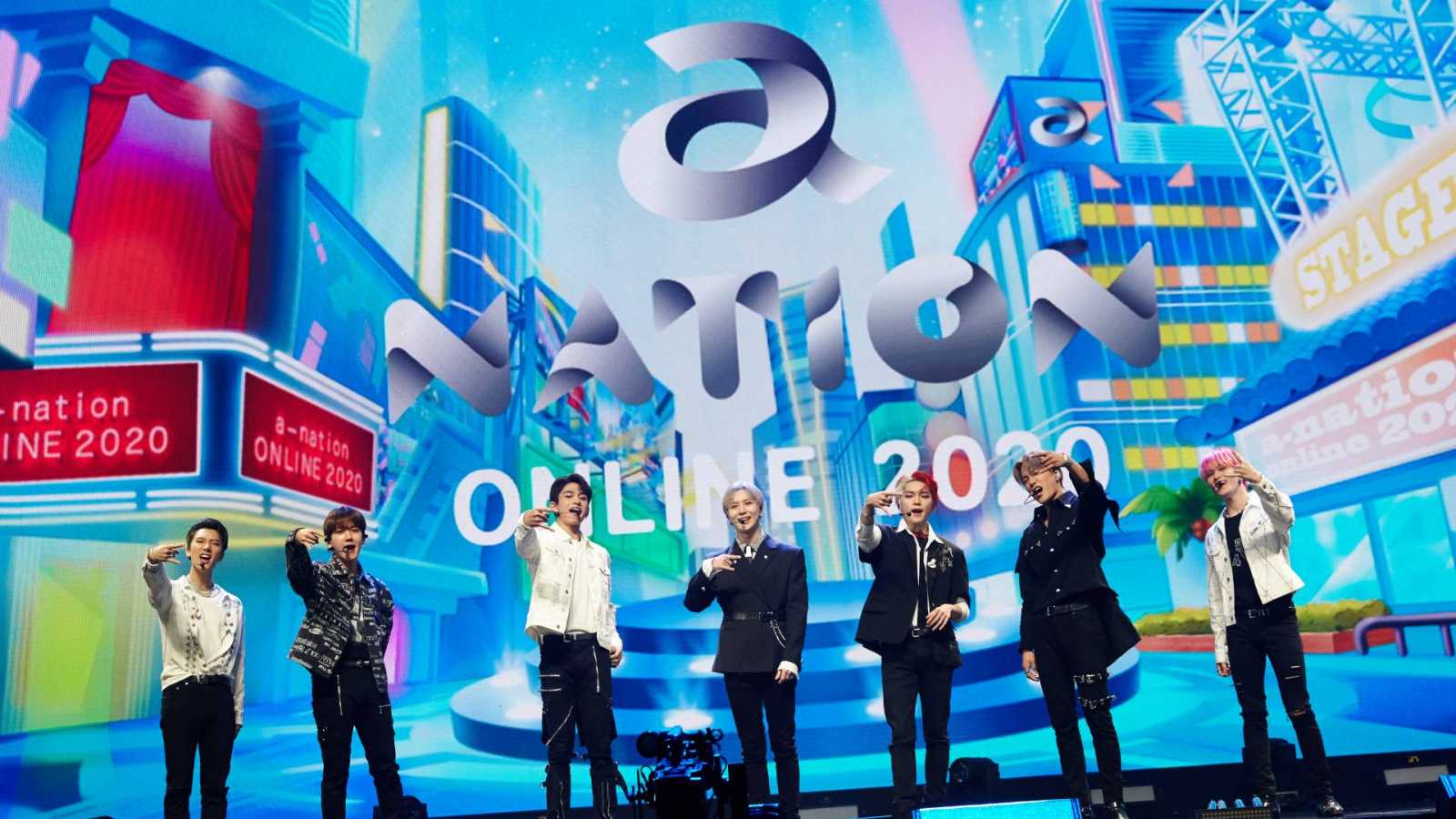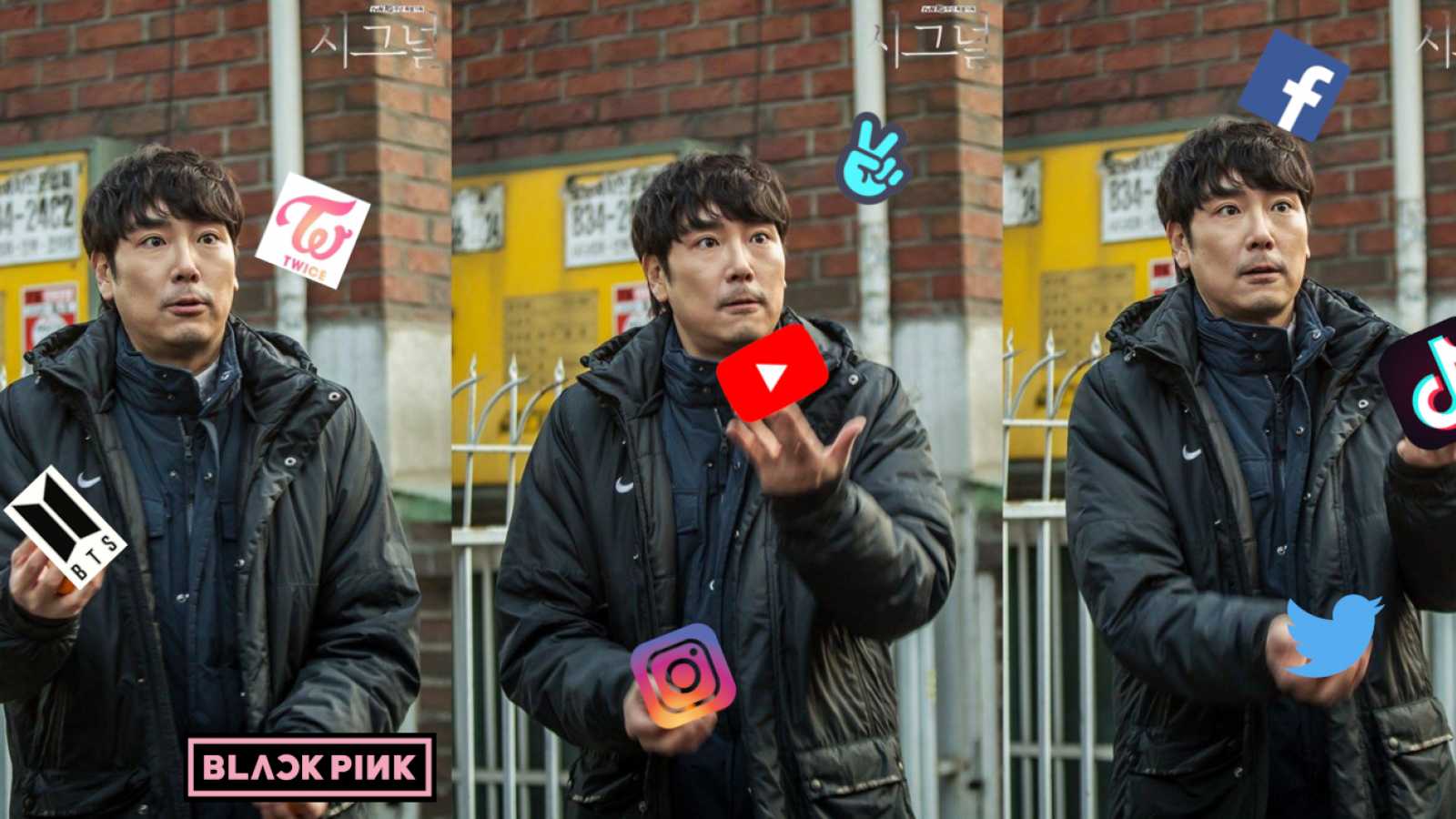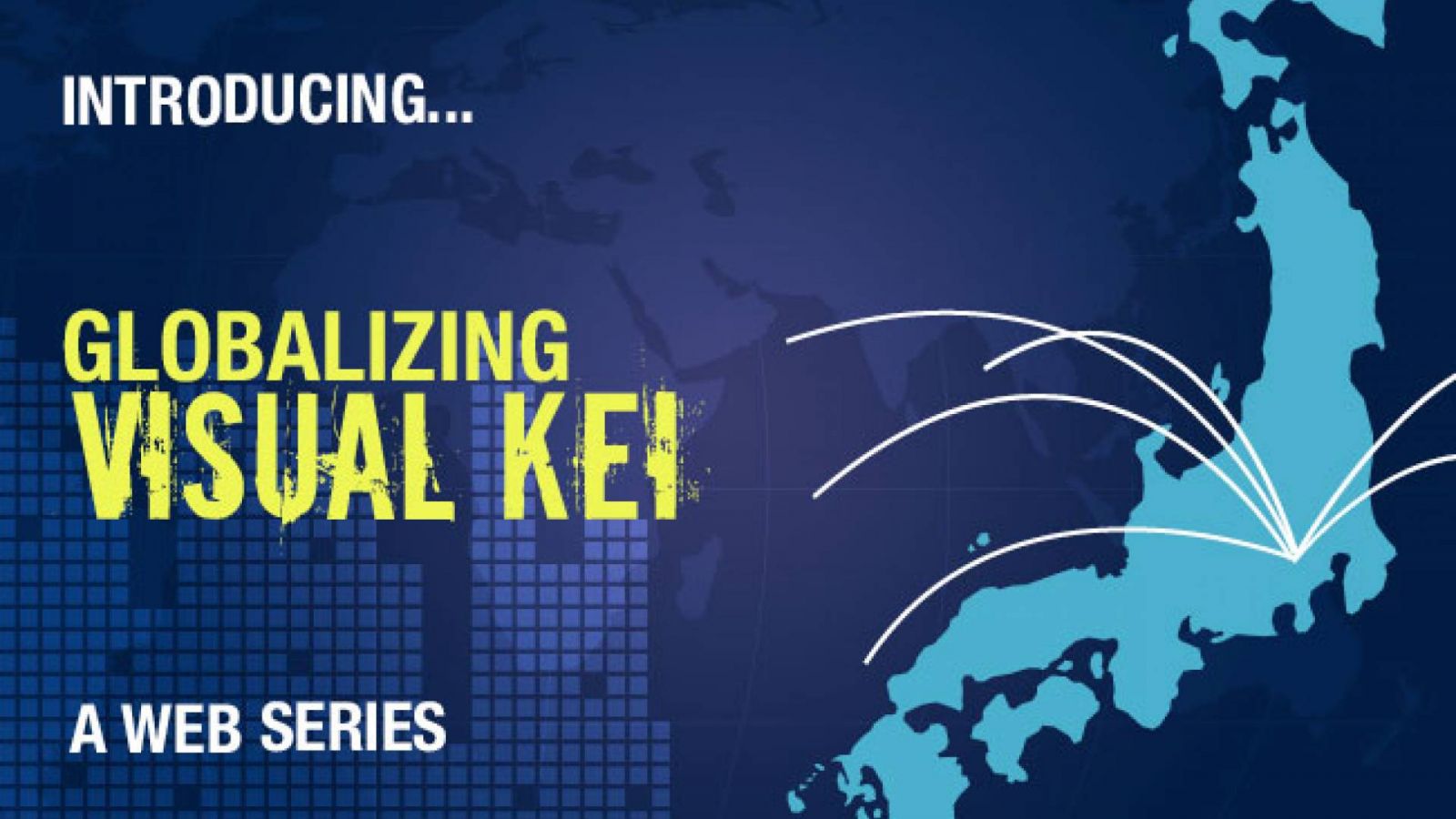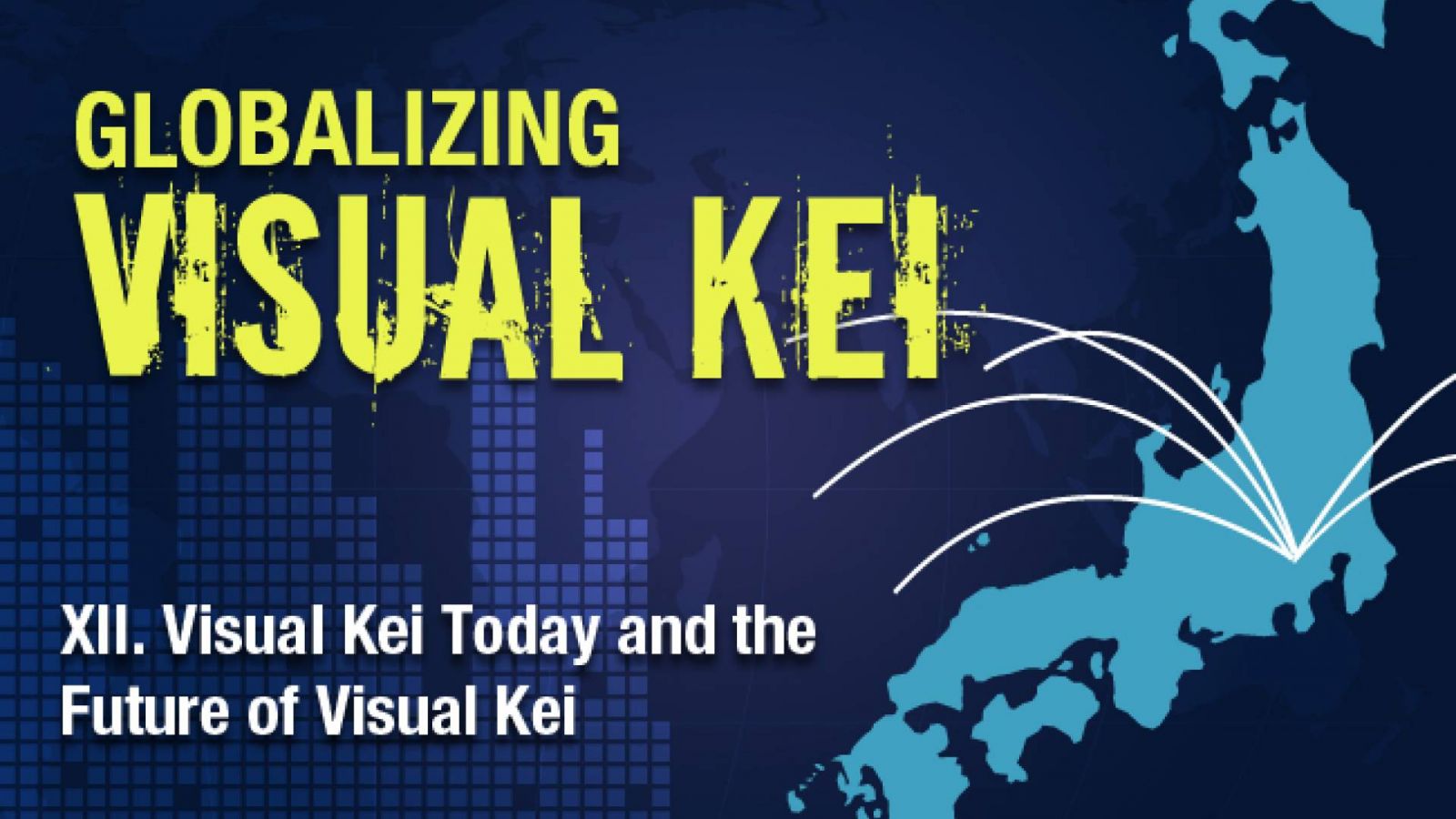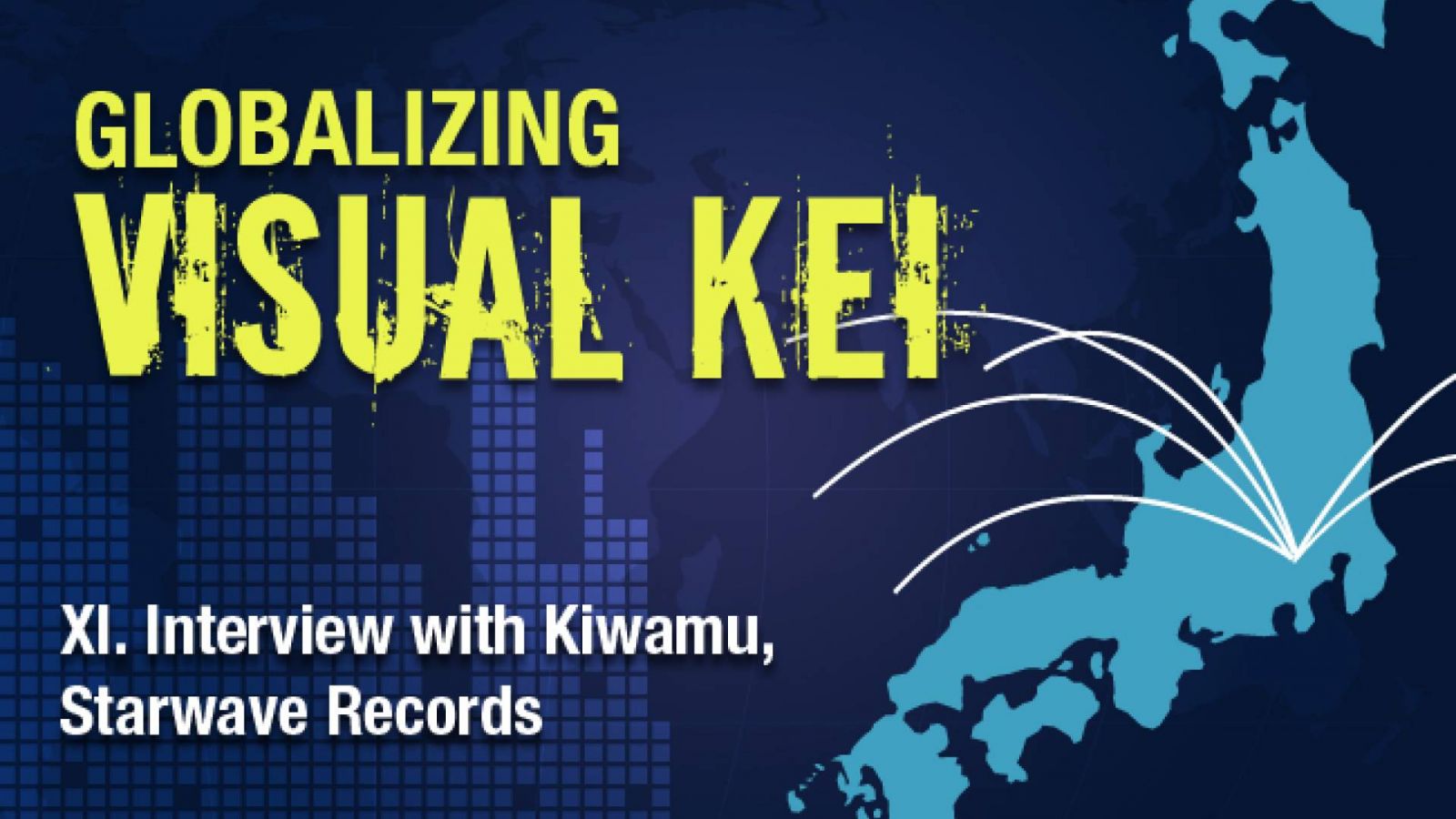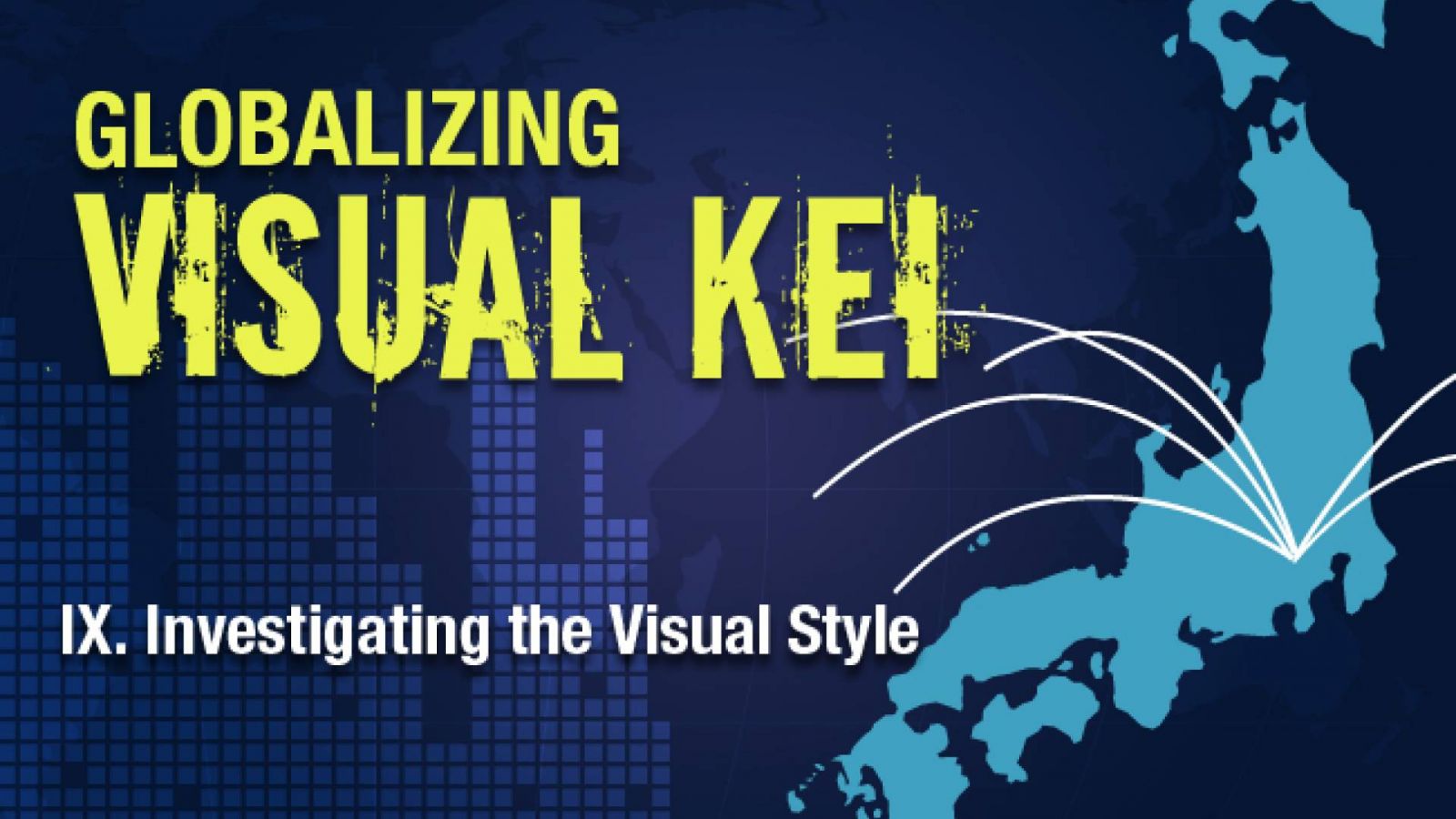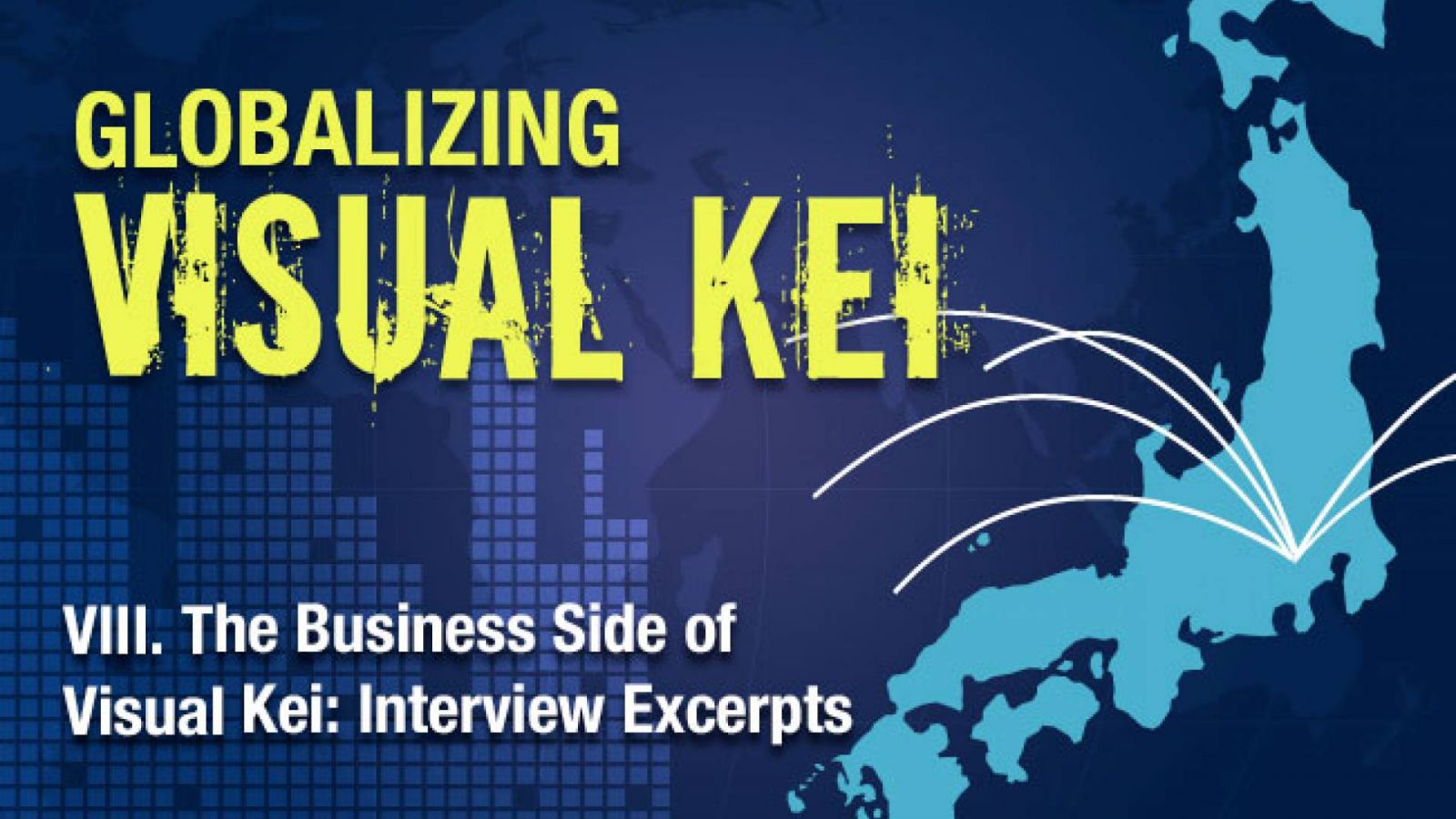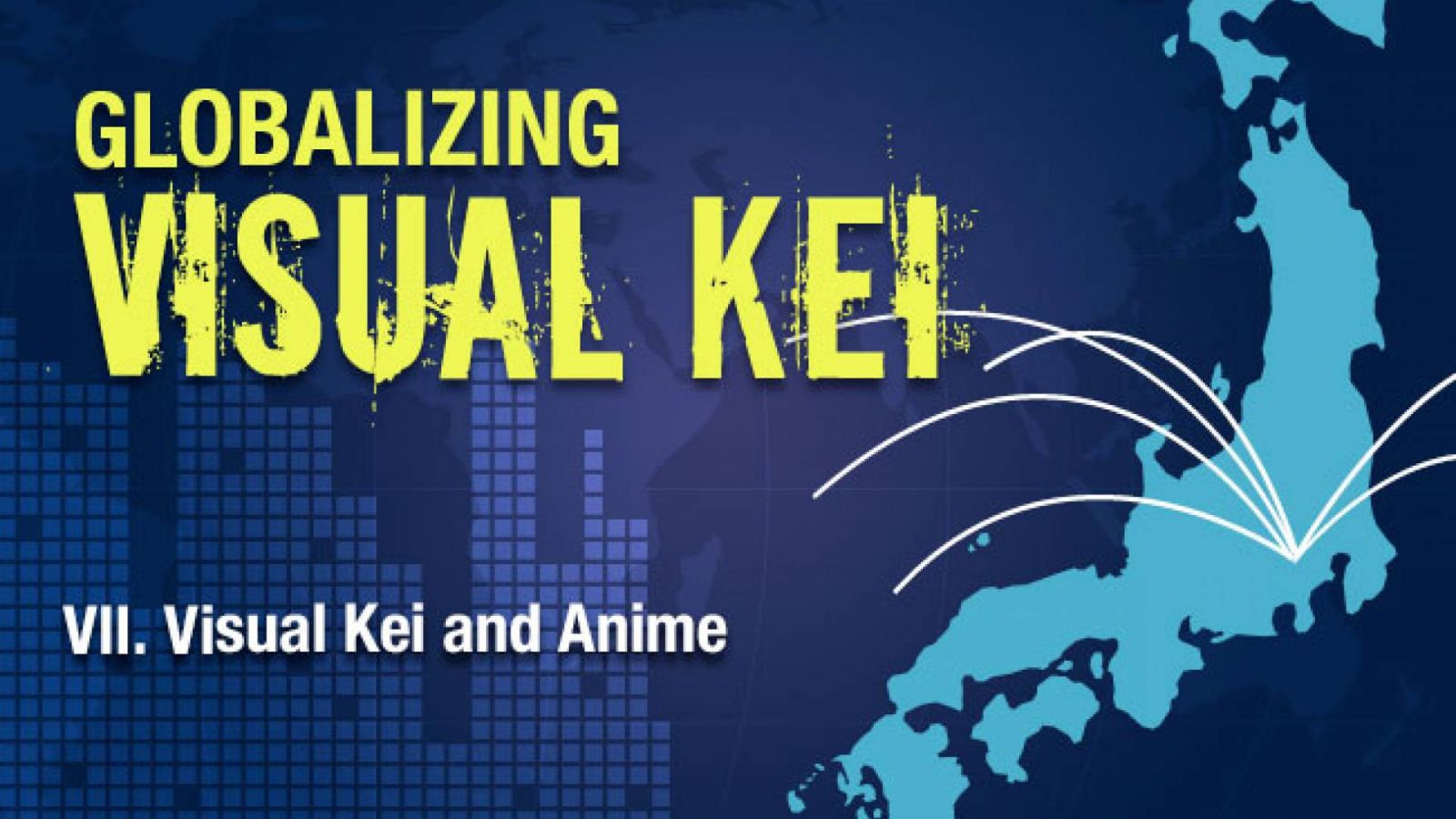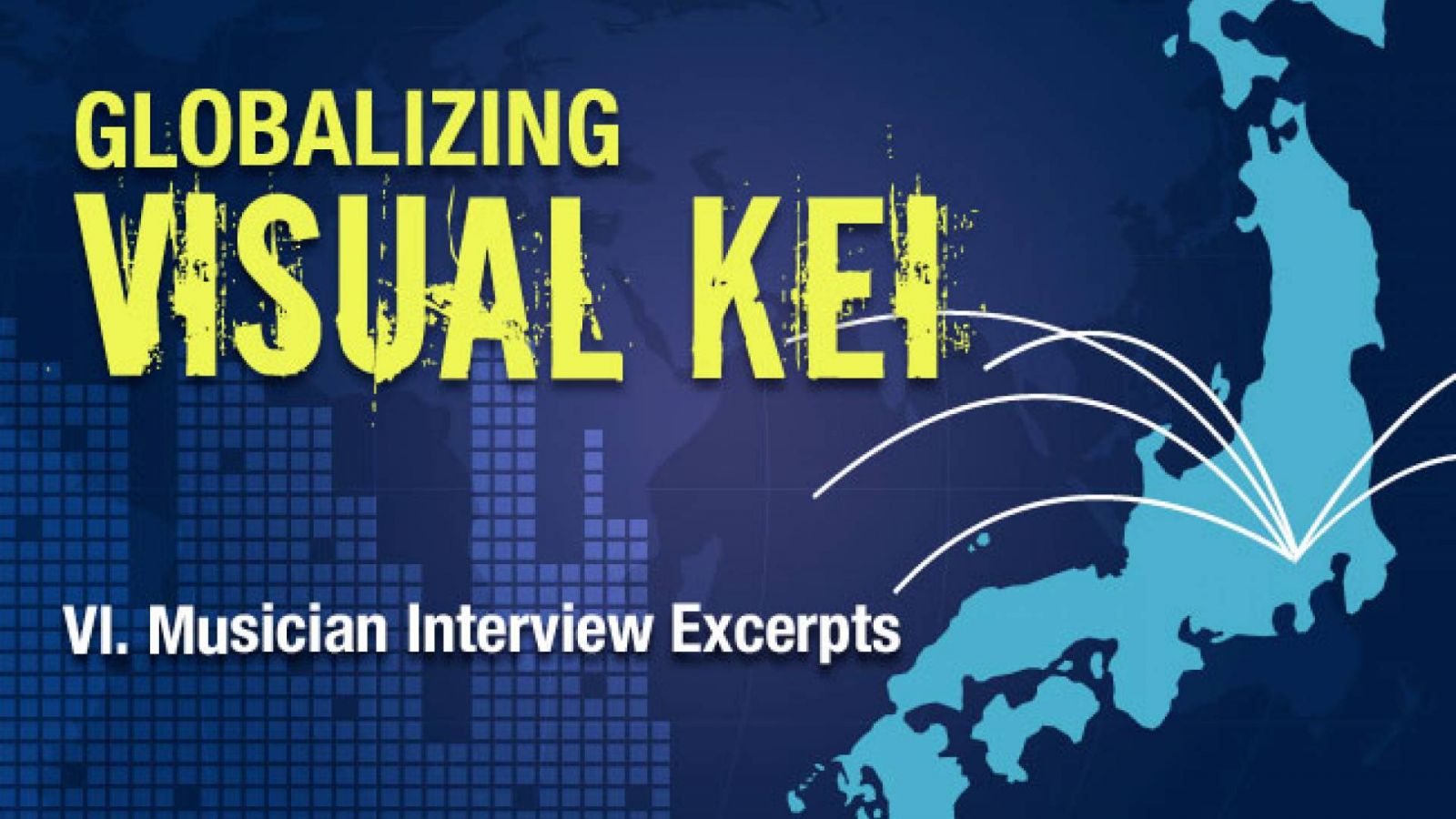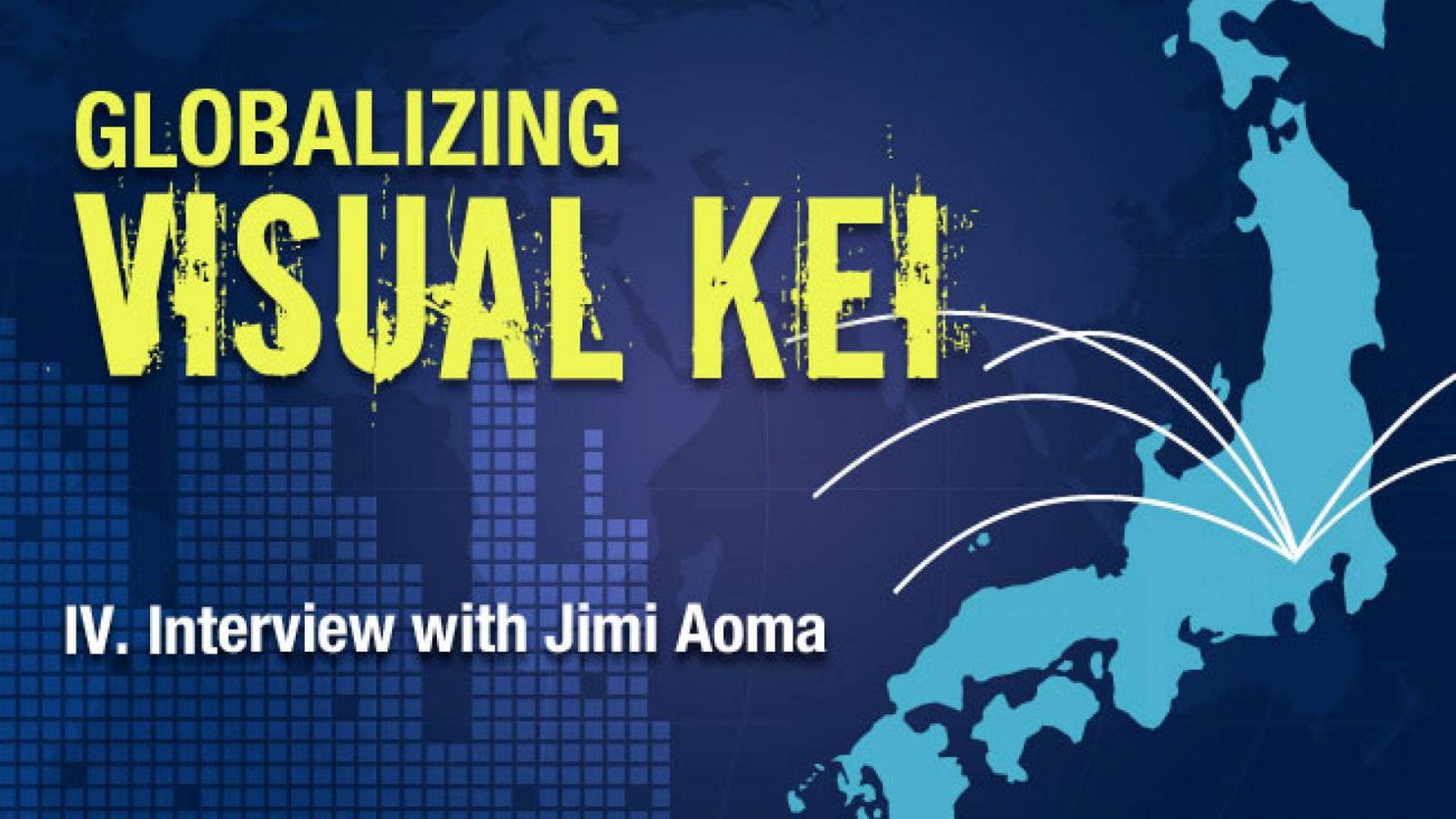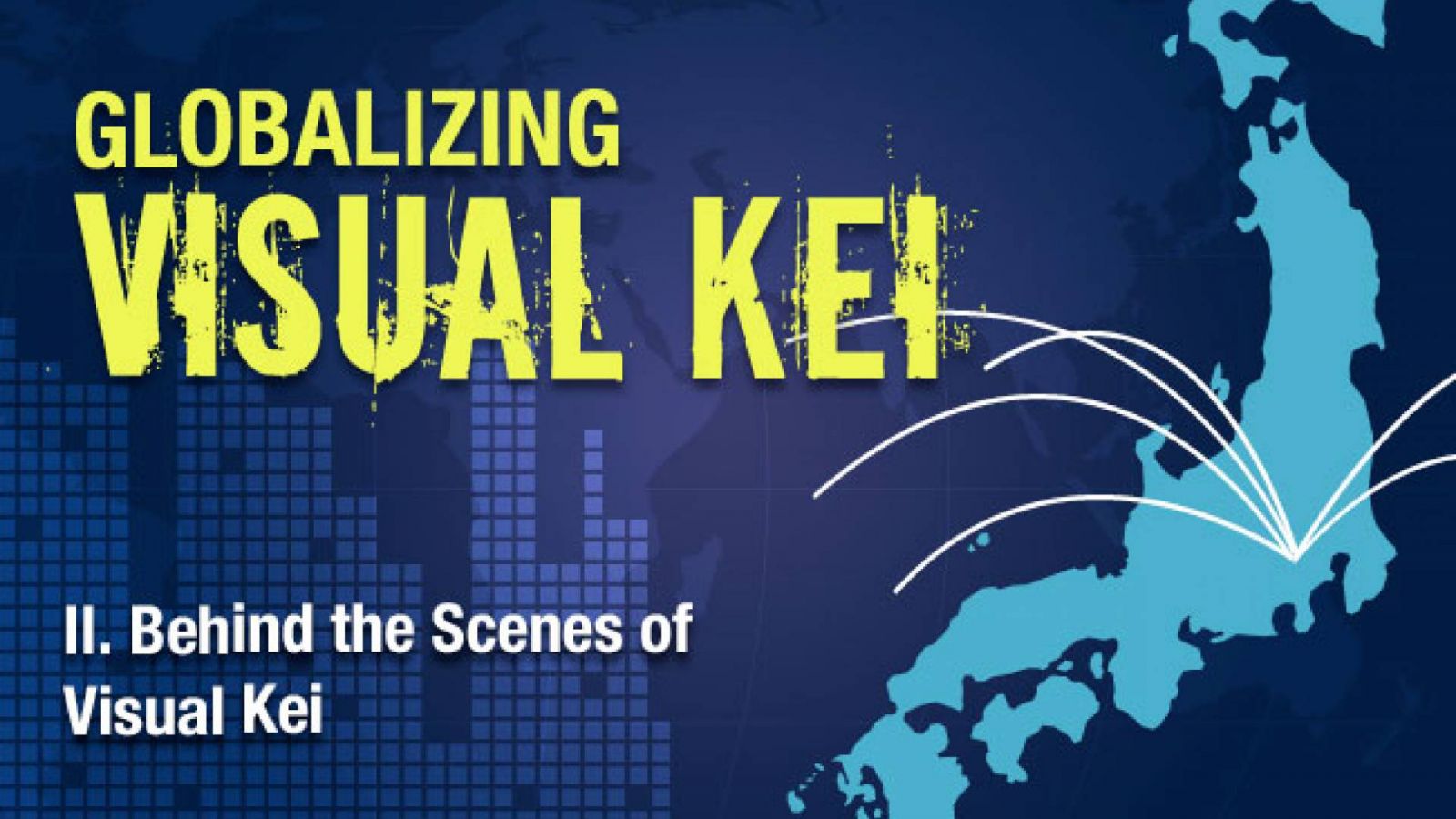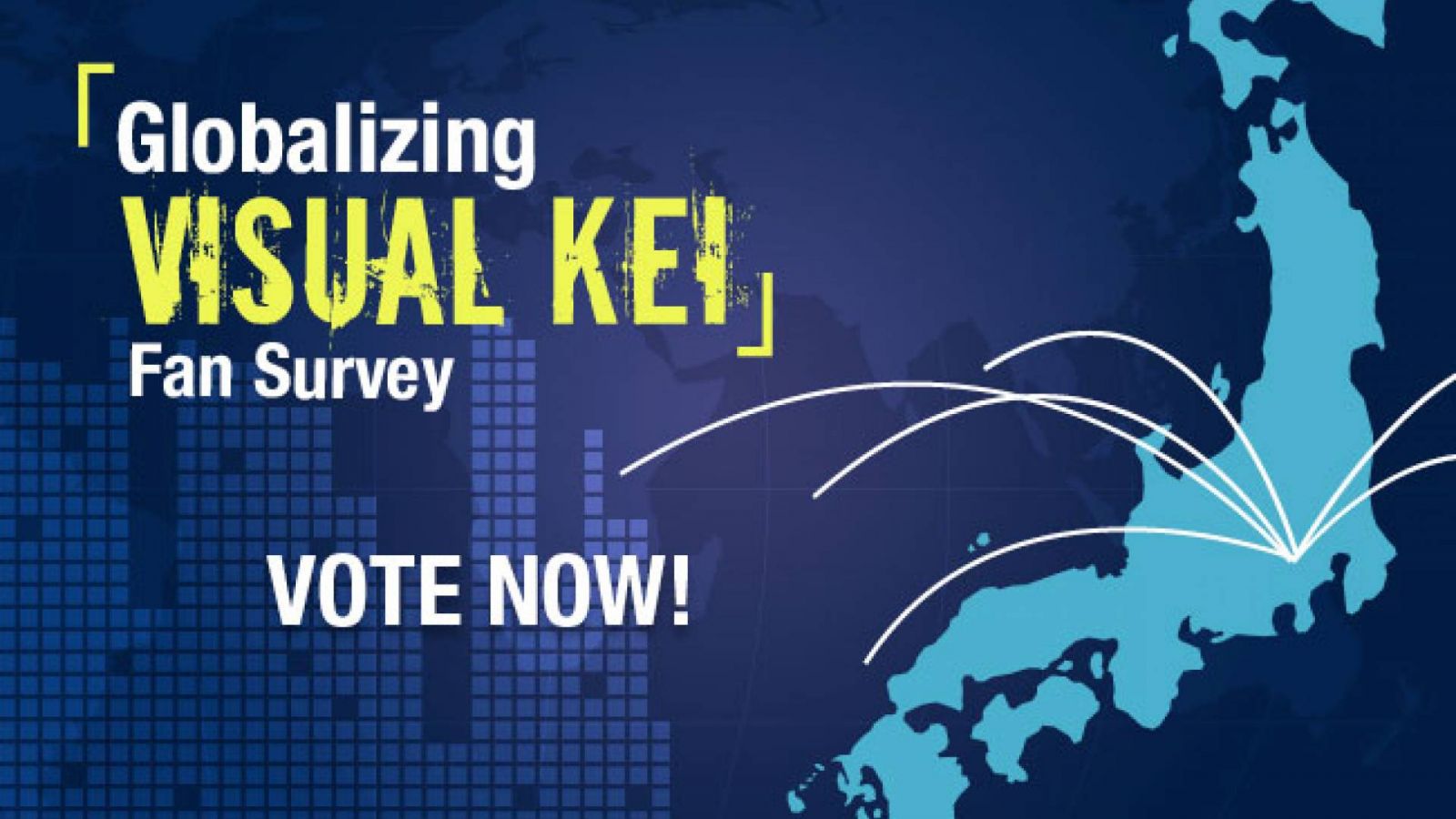Since visual kei’s first introduction to the overseas Japanese culture consumer market, it has often been grouped with another growing phenomenon, Japanese animation, known for short as “anime.” In the United States, conventions for anime became a means through which many Japanese artists, visual kei performers included, first were enabled to perform overseas; today, convention performances account for 21% of America’s visual kei shows. This is in stark contrast to Europe which has had less than 1% of their total visual kei performances take place at an anime convention.
1 In this article, we will discuss the trends of American anime conventions and visual kei.
 Visual Kei and Anime: The Overlap
Visual Kei and Anime: The Overlap
Over time, the growth of anime and manga overseas has helped visual kei, with some of the visual kei popularity boom overseas coinciding with pinnacle points in anime and manga sales over time.
2 Yet overall, it appears anime has only helped to grow the scene: 20% of fans worldwide who responded to
The Globalizing Visual Kei Survey reported that they learned of visual kei through anime, manga and video games.
While not explicitly visual kei, we have seen numerous animes portraying various rock bands with costumes and interesting visuals, with just a few being “NANA” with the rock bands
BLACK STONES and
TRAPNEST, “Gravitation” with
Bad Luck, and “Black Heaven” with its self-titled band. We have also seen real-life bands created as promotion for anime and television dramas, such as
Λucifer, which existed for four years to promote the anime “Kaikan Phrase.” Additionally, manga has brought to life its own stories of visual kei: “Diabolic Garden” brought to life the fictional visual kei band
Dampire, while “Ludwig Revolution” spun the tale of a visual kei prince.
In recent years, there has been a rise in visual artists acting in television dramas, movies and other TV and radio programming as well as singing the opening and closing theme songs for various animes, for example:
・ “Deathnote”:
Nightmare’s
The WORLD and
Alumina3
・ “Darker Than Black”:
An Cafe’s
Kakusei Heroism ~ The Hero Without A Name4
・ “Kaichou ha Maid-sama”:
heidi.’s
Yokan5
・ “FullMetal Alchemist”:
SID’s
Uso6
・ “Katekyo Hitman Reborn”:
LM.C’s
Boys and Girls 7
This has undoubtedly helped to bolster the visual kei scene in Japan and gain new fans worldwide, but it has also, to an extent, tied them together. As a group, visual kei and anime create a market for the consumption of both music and cartoons, yet this alliance often blurs the distinction between them, and hampers marketability to the general public. For a person who may dislike either anime or visual kei, the probability of consuming the other while they are connected is unlikely. Further, with many organizers and conventions focusing their promotion primarily to the existing visual kei and anime fandoms, the marketing opportunities to outside fans to grow the scene are often forgotten.
When those opportunities do become available, the visual kei band may be ultimately deemed an “anime band” by a general audience because the performance is held at a convention or is tied to anime.
Toshiya, bassist of
DIR EN GREY, explained, “We turned down nearly all invitations to play at anime expos or Japanese-culture festivals (in the west). Once you perform at one of those
Japan Expo-type events, it creates an image of your band that's hard to brush off.”
8
The Pros and Cons of Hosting Visual Kei Events at Anime Conventions
For many anime conventions, their staff view visual kei bands, like all Japanese performers, as an avenue to strengthen the celebration of Japanese culture. Although anime conventions primarily surround anime, today, many feature a variety of cultural hobbies which can interest any potential attendee: the average convention hosts talking panels on a variety of Japanese topics from anime, manga and video games to music, television, movies, and other cultural hobbies. Additionally, there are often cosplay events, open microphone karaoke times, raves, musical performances, music video competitions and more.
9 Some conventions have even taken an additional step, clarifying their title to clearly emphasize their involvement in multiple aspects of Japanese culture; an example is California’s
AM2, (also known as
Animation, Manga and Music, to a Higher Power.)
10
Hosting events at anime conventions has proven in the past to be a smart financial and promotional move. An anime convention will increase their attendee count for fans that may not enjoy anime but will attend if there is a visual kei performance; 43% of fans worldwide who responded to the Globalizing Visual Kei Survey said that they would attend an anime convention solely to see a visual kei concert. We also must consider that for a fan who enjoys anime but does not frequently go to anime conventions, a strong musical guest may be the incentive needed to attend.
When promoters bring over bands, an underlying issue is always money. Without a successful show or tour, the promoter could not only lose all of the previously invested money but find themselves paying out their own monies to make up the deficit owed to the club, band, and other necessities. In most cases, performing at anime conventions will prevent this. Most conventions will shoulder all costs, and may even provide some of the necessary equipment to help the artist perform. Furthermore, the band’s management is assured a sizable crowd will be present which can not always be guaranteed at a venue or on tour. Often being independent promoters or small companies, this is a huge factor, as many spend their own funds to bring the band from Japan.
11
However, there are drawbacks which also involve finances for fans. Most conventions are on average three days, and often spread out events across them to try and persuade fans to buy a three-day pass. These events include autograph signings, photo sessions, a concert, and sometimes a question and answer panel. In years past, many conventions offered two-day and one-day passes; for various conventions, this has been discontinued and they now only offering three-day passes.
12 If a fan wishes to attend, they must purchase the three-day pass, even if they only intend to go one day. Additionally, it is typically against convention policies to “share” badges, so badge transfers during the convention are frequently not allowed.
13
Another disadvantage to convention performances involves a lack of outside promotion; we must consider the potential harm done to both the bands and the fan base as a result of this. When a band performs at an anime convention, the amount of promotion done is significantly less than when a band performs at a venue, as an audience is assured at a convention, and most conventions continue to grow yearly in size.
If a band plays numerous times for an anime convention, the music is being marketed only to the same audience repeatedly, eventually hindering growth of the fan base as well as the crowd which attends the show, because there are concert-goers who are opposed to seeing the same artist multiple times. 43% of fans who answered the Visual Kei Globalization Survey had stipulations: some fans indicated they would only attend repeat performances if it was a favorite band, others said they would only attend repeat performances a certain amount of times. There were also 1% of voters said they simply would not attend the same artist’s show more than once.
14
Choosing which band to bring and where it should perform is often a tricky task for organizers and conventions alike. It is important to ensure there is first a fan following for that artist, as well as possible appeal for the general public. It is not uncommon for bands to be turned down by organizers for simply not having the following to sustain an overseas tour.
15 However, if a band’s first show is done at a convention, it is possible that even when external promotion is done, mainstream music fans may not want to immediately undertake the costs involved to attend. Despite this risk, it is important to still undertake external promotion; even if only a handful of mainstream music fans ultimately attend the show, the satisfaction from the show could spread via word-of-mouth and produce many more fans when the band subsequently returns.
If care is taken to market events to both existing fans and the general public, revenue could increase for both convention and venue concerts. Over time, the new fans would likely integrate into the same group of fans that may not like anime but would come to a convention solely to see a band perform as well as see them in a venue.
Fan Expenses: Venues vs. Anime Conventions
For a fan who is strictly interested in events surrounding a musical guest, it can be frustrating to continually attend conventions to see artists they enjoy. It can likewise be wallet-breaking, as expenses significantly rise when having to attend a convention instead of a show located at a venue; this is especially true when the fan stays multiple days. In some cases, the cost may be so high that it deters the fan from going at all. This ultimately hurts everyone: from the band who loses fans, the promoter or convention which lose the potential revenue, and the attendee who loses the opportunity to enjoy the performance.
Let’s consider the total expenses for conventions and concerts by breaking it down hypothetically first locally, and then by extensive travel.
Example Expenses for Local Travel
Local location: Baltimore, Maryland, United States
Venue:
For a venue one-day ticket, an average ticket cost can range from $10 to $50. Our example “ticket” is $35, which was the door-cost for a recent visual kei tour.
16 Looking up local parking garages, he can park for up to 12 hours and spend $16.
17
Not including gas and food, the fan’s total expenses is $51.
Convention:
For this we will utilize the Maryland anime convention Otakon’s costs for 2011; they have an at door-cost of a three-day pass for $75.
18 (Otakon does not offer two or one-day passes).
19 If the fan only comes to the convention, sees the concert and goes home, his only cost will be parking ($16) and the pass.
Not including gas and food, to stay only one day, the fan’s total expenses is $91.
Should he choose to attend all three days, he will be staying overnight and need a hotel. Utilizing Hotels.com, we found a three-star hotel. His hotel cost will be $139 a night, or $278. He chooses the same parking garage as before, and will pay $18 per day to stay overnight, or $54 for the entire trip.
Not including gas and food, to stay the entire convention, the fan’s total expenses is $401.
Example Expenses for Extensive Travel
Traveling from Baltimore, Maryland to Los Angeles, California
Venue:
At this show, there is a two-day concert. We will utilize the same ticket price as before, but multiply it by two, bringing his concert cost to $70. Using Expedia.com, we found a flight for $410. Again utilizing Hotels.com, we found a three-star hotel for $124 a night, or $248 from Friday until Sunday. Since he will use taxis while in Los Angeles, we will estimate this will cost him $60.
Not including food, the fan’s total expenses is $788.
Convention:
For this, we will utilize the California anime convention
Anime Expo’s costs for 2011.
20 While this is a four-day convention, we will look at both four-day and two-day costs. For the fan to only attend two days, his door-cost will be $65, and concert pass cost will be $30. Using the same information as before, his hotel cost will be $124 a night, or $248 from Friday until Sunday; his flight will be $410. His taxi cost will remain $60.
Not including food, to stay two days the fan’s total expenses is $813.
Should the fan wish to attend the entire convention, the four-day pass will cost $75, which is the same cost as
Otakon’s three-day pass, his concert pass will cost $30. Using the same flight information, his cost is $410. Using the same hotel the cost will be $124 a night, or $372 total from Friday to Monday. Since he will use taxis one day longer than before, we will estimate this will cost him $80.
Not including food, to stay the entire convention the fan’s total expenses is $964.
When organizers or conventions also charge for VIP tickets for concerts and signing events on top of the anime convention pass, this compounds expenses further. Consider the hypothetical breakdown of costs above, but add from $15 to $30 for a VIP pass concert. In some cases, this enables you to avoid waiting in line and be in the first few rows;
21 in the case of
Anime Expo, this pass allows you access to attend the concert, and is on top of your membership fee. While they have a “standby” line for leftover main-events tickets which are free, if your event runs out of tickets, you cannot attend.
22
Additionally, there are occasional costs for autograph or photo sessions. This can range anywhere from $10 to $25 dollars;
23 sometimes the cost is just for the ticket, other times it is covering the cost of a certain CD or piece of tour merchandise which must be obtained to attend the session. For our hypothetical one-day convention trip in Maryland outlined below, adding these two costs at their maximum would boost the total price to $146, which is nearly triple the cost of the venue-only price.
Summary
While it has a potential to be costly, today anime conventions still prove to be a successful way to bring over a band and draw a crowd. They are a means for friends from around the country to come together for an event that, had it been held at a venue, they may not have traveled for otherwise. The conventions offer activities nearly twenty-four hours a day, and for a price that realistically is quite low. Comparing it with other popular hobby conventions, the 2011
LeakyCon conference for “Harry Potter” is $60 per day
24 and the “Star Trek” Las Vegas convention costs $149 for the weekend with general admission and $324 with “preferred” admission.
25
Yet it might behoove the convention, attendees and guests to come up with other options financially which would be a compromise for all involved. Reviving one-day passes or exclusive “concert only” passes, and issuing free numbered ticketing which can prevent long lines and empty wallets are just a few of the options available;
AM2 is already utilizing such ticketing and has tickets which are only good for a specific day’s concerts or events, and have premium pricing built into such passes for those that wish to spend a little extra.
26 This does not, however, solve the issue of promotion to the general music scene; this is an issue which must be tackled together by the promoter and convention. Street teams, local music store advertising and music websites or forums are all excellent vehicles of promotion, but are minimally used today.
Since 2006 there has been a significant decrease of concerts performed at conventions in the United States. However, with 24% of all American shows having taken place at an anime convention, it is still a point of concern for many fans and organizers alike who are working to see the fan base grow.
26 One American fan pointed out, “If bands truly want to break into the international market, they need to stop performing only at anime conventions. It may be an easy way to get an audience, but it leaves their fanbase as limited as it was beforehand.”
27
Next Week...
Join us next week as JaME interviews anime conventions, promoters, magazines and more, in the “Globalizing Visual Kei” web series' eighth installment, “The Business Side of Visual Kei: Interview Excerpts.”
______________________________________________________________
[1, 14, 26, 27] “Globalizing Visual Kei Survey”, last modified March 11, 2011.
[2] Allison Anne, Millennial Monsters. (Uni. Of California, 2006) 165.
[3] "Nightmare (band)" last modified May 30, 2011.
[4] "Kakusei Hiroizumu", Anime Lyrics.com, 2011.
[5] "Kaichou wa Maid-sama! Ending Yokan por Heidi letra",Openingsanime.com, 2011.
[6] "Fullmetal Alchemist: Brotherhood", Fullmetal Alchemist Wiki, 2011.
[7] "Reborn!" Anime Lyrics.com, 2011.
[8] Daniel Robson. “Shock-rock act Dir en grey snub cartoons for cred.”The Japan times, December 17, 2010.
[9] "Anime USA Schedule", 2010; "Oni-Con Schedule", 2010.
[10] "Am2", 2010.
[11, 15] Jess Reade, A-Kon staff, e-mail interview to author, March 10, 2011
[12] "Otakon Vitals: Registration", 2011; "Anime USA Registration", 2011.
[13] "Otakon FAQ", 2011; "Katsucon Registration", 2011.
[16] "JAXX Girugamesh with Acey Slade and The Dark Party 4-27-11", 2011.
[17] "Harbor Park Garage Parking", 2011.
[18] "Online Registration for 2011 Otakorp Memberships", 2011.
[19] "Registration for Saturday Only", Otakon BBS, 2011.
[20] "Anime Expo 2011 Online Registration", 2011.
[21] Jhouserock, E-mail interview with author, March 25, 2011.
[22] "Main Event Ticketing Policy and FAQ", 2011.
[23] "Megacon FAQ", 2011; past Jhouserock Events.
[24] "Leakycon", 2011.
[25] "Creation Entertainment Convention and Event Ticketing", 2011.
[26] "AM2 Main Event Ticketing", 2011.

